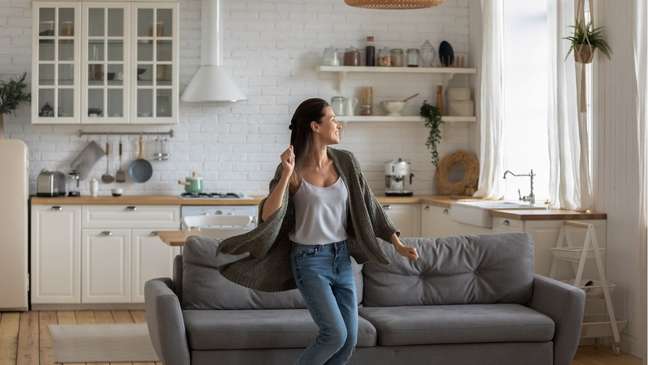The specialist explains how the architecture and decoration of the house have a direct influence on the residents and their feelings; better understand

Taking care of mental health is a task that goes through a number of aspects, from food to physical exercise, and also the details that make up the space in which you live. After all, for many experts, environments directly affect emotional problems and the way people deal with them, you know?
For the teacher of the Architecture and Urban Planning course, Marilice Casagrande Lass Botelho, this is particularly evident in some aspects of the architecture and decoration of the house. “The most damaging aspects for the mental health of space users are usually related to problems of proportion (ergonomic problems), inadequate incidence of natural lighting, presence of noise and improper use of colors and textures,” she explains. Therefore, it is very important understand how some domestic problems can affect us and how to avoid making mistakes.
How does the environment affect mental health?
There are architectural and decorative factors that can affect how people feel. “Well-planned projects – with correctly applied spatial proportions and lighting, adequate ventilation, low noise and a palette of finishes compatible with the functions developed there – generate comfortable and harmonious spaces, thus contributing to good living”, emphasizes Marilice.
One of the most important aspects of making a more comfortable environment for residents is the natural lighting. And this is related to biology, as research shows that brightness in the environment directly interferes with metabolism.
Having poor contact with natural light changes the production of some hormones, causing changes in mood and sleep patterns, as well as developing symptoms of depression. So, whenever possible, let natural light enter the rooms, see?

What to do to have a stress-free home?
There are some precautions you can take to make your furniture beneficial for your well-being. Marilice recalls that incorporating nature’s characteristics into the environment, for example, is an interesting strategy in this sense.
Elements such as water, greenery, natural light, wood and stone, for example, are good options for conveying a sense of emotional well-being and comfort. All this is linked to the idea of biophilia, a term popularized in a book by Edward Osborne Wilson and which in ancient Greek can be translated as “love for living beings”.

According to biophilia, the shape of furniture and environments also contributes to making a place more or less conducive to mental health. “Using shapes and shapes that mimic things found in the natural world, with more sinuous and organic shapes, instead of straight lines and geometric shapes, is another factor that can help keep you mentally healthier,” explains Marilice.
In addition, colors can also work together. After all, the psychology of color states that different emotions are related to different colors. Therefore, it is worth studying more on this issue and seeing what shades should appear the most in your decor.
Finally, although there are indications that decoration and architecture may have links to our mental health, organizing environments accordingly does not replace other healthy habits or consultations with a specialisthuh?
Source: Marilice Casagrande Lass Botelho, professor of the Architecture and Urban Planning course at the Universidade Positivo (UP).
Source: Terra
Benjamin Smith is a fashion journalist and author at Gossipify, known for his coverage of the latest fashion trends and industry insights. He writes about clothing, shoes, accessories, and runway shows, providing in-depth analysis and unique perspectives. He’s respected for his ability to spot emerging designers and trends, and for providing practical fashion advice to readers.




![Tomorrow belongs to us in advance: Alex is preparing to go? … What are you waiting for from the week of 2025 to May 16, 2025 [SPOILERS] Tomorrow belongs to us in advance: Alex is preparing to go? … What are you waiting for from the week of 2025 to May 16, 2025 [SPOILERS]](https://fr.web.img5.acsta.net/img/8e/b2/8eb2158bd34199ce9704a989e16e38d9.jpg)



